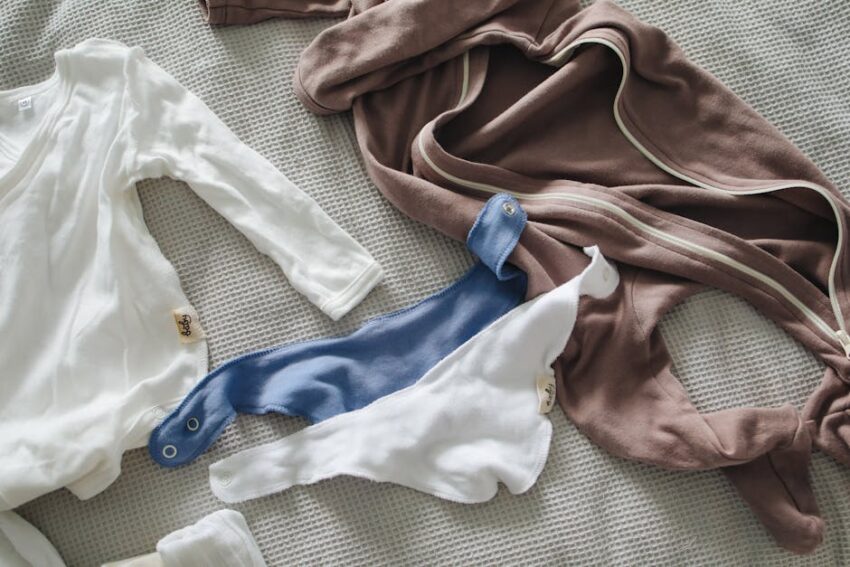Creating a minimalist baby wardrobe with organic clothing is a sustainable and practical choice that benefits both your baby and the environment. This approach focuses on selecting versatile, high-quality items that are eco-friendly, safe, and can be mixed and matched. Here’s how to create an efficient, minimalist baby wardrobe:
1. Prioritize Essential Pieces
- Bodysuits and Onesies: Choose a few high-quality organic cotton or bamboo onesies in neutral colors that are easy to pair with other items.
- Footed Pajamas: Opt for organic footed pajamas that double as sleepwear and daywear, keeping your baby warm and comfortable.
- Leggings and Pants: Select versatile organic cotton leggings or pants that can match multiple tops.
- Swaddles and Blankets: Invest in breathable, organic swaddles for multiple uses – swaddling, nursing covers, or stroller blankets.
2. Choose Organic and Sustainable Fabrics
- Organic Cotton: Soft and free from harmful chemicals, organic cotton is gentle on your baby’s skin and reduces environmental impact.
- Bamboo Fabric: This fabric is known for being hypoallergenic, soft, and sustainable due to the rapid growth of bamboo plants without pesticides.
- Merino Wool: Ideal for layering, merino wool is breathable, moisture-wicking, and helps regulate temperature naturally.
3. Stick to Neutral and Versatile Colors
- Neutral colors like white, beige, and soft pastels make it easy to mix and match different clothing items, allowing you to create multiple outfits with fewer pieces.
- Gender-neutral colors also allow for reusability if you have more than one child.
4. Emphasize Quality Over Quantity
- Fewer, higher-quality pieces last longer and are more durable than a larger wardrobe of low-quality items.
- Look for certifications such as GOTS (Global Organic Textile Standard) to ensure the fabric’s sustainability and safety standards.
5. Plan for Growth
- Choose items that can grow with your baby, like expandable bodysuits or clothing with adjustable snaps.
- Opt for slightly larger sizes that your baby can grow into, extending the life of each piece.
6. Seasonal Considerations
- For colder months, add layers like organic wool cardigans or hoodies.
- For warmer weather, lightweight organic cotton dresses, shorts, and sleeveless rompers are ideal.
7. Limit Accessories
- A minimalist wardrobe doesn’t require many accessories. Focus on functional items such as organic hats or mittens for warmth.
- Choose sustainable footwear made from organic materials as your baby starts to walk.
8. Hand-Me-Downs and Second-Hand Shopping
- Look for gently used organic clothing from local consignment shops or online marketplaces to build your baby’s wardrobe sustainably.
- Accept hand-me-downs from friends or family to save on cost and reduce environmental impact.
9. Caring for Organic Baby Clothing
- Wash organic clothes with eco-friendly, non-toxic detergents to maintain their quality and keep them safe for your baby.
- Line dry when possible to reduce energy consumption and keep clothes in better condition longer.
10. Minimalism Benefits for Your Baby
- A minimalist approach minimizes decision fatigue and clutter, creating a calmer environment for both parent and child.
- Organic clothing supports your baby’s health by reducing exposure to harmful chemicals found in conventional fabrics.
By focusing on these essentials, you can create a minimalist, eco-friendly baby wardrobe that is practical, safe, and sustainable.

